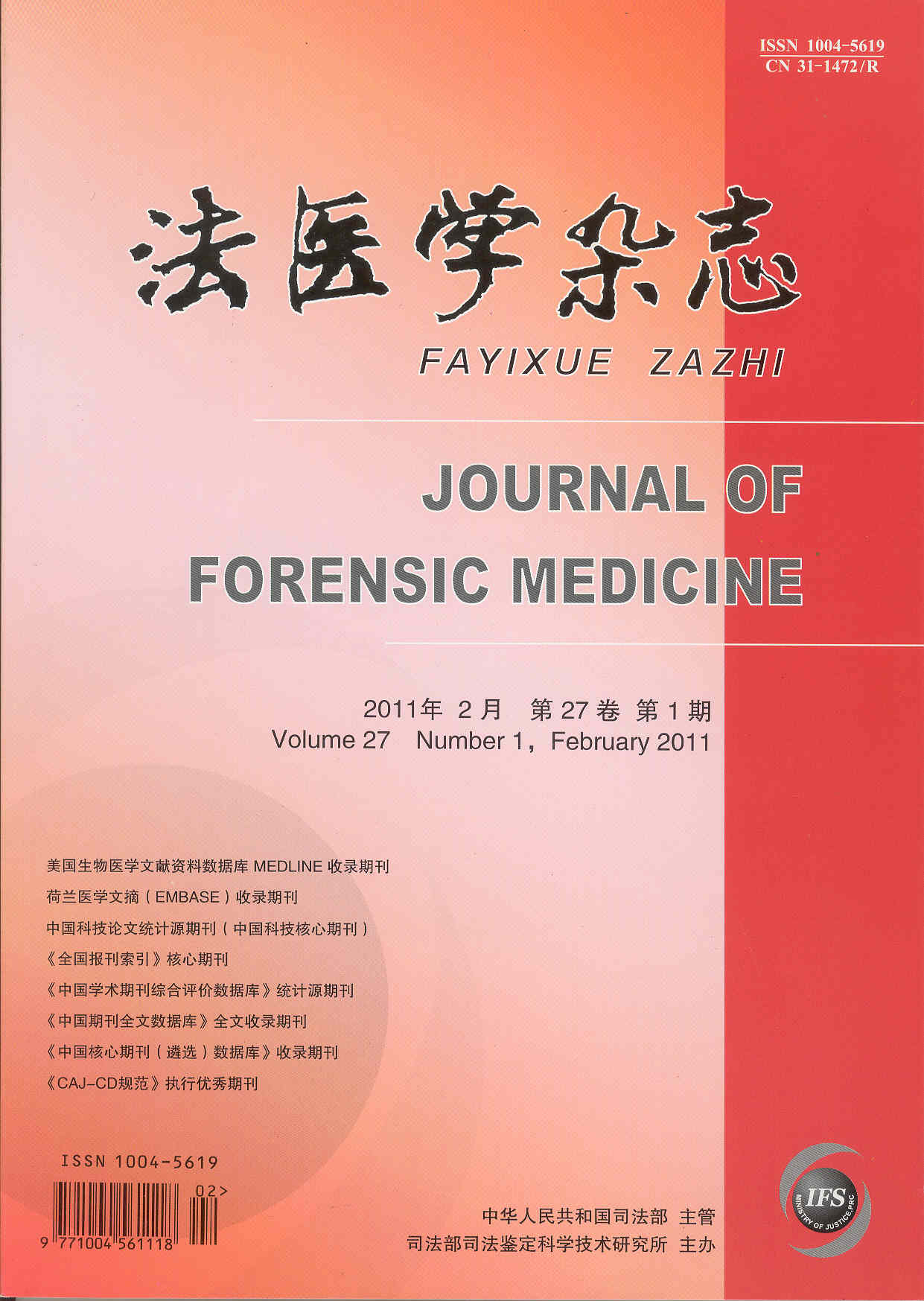|
|
A Primary Study for Criteria of Full Sibling Determination with Identifiler System
ZHAO SHU-MIN, ZHANG SU-HUA, LI CHENG-TAO
2011, 27(1):
17-21.
DOI: 10.3969/j.issn.1004-5619.2011.01.005
Objective To investigate the criteria of the number of identical allele(IAn) and the number of matched STR locus with 2 identical alleles(A2) for full sibling(FS) determination with Identifiler system. Methods According to the limited distribution of IAn and A2, all of the 31 potential values of IAn were substituted into the published discriminant functions to obtain the cut-off values of IAn and A2 for FS determination, and then 4 different criteria were determined to distinguish 280 FS pairs from 2 283 individual pairs, respectively, which had been genotyped with Identifiler system. Cumulative full sibling index (CFSI) of the samples were calculated with ITO method, and 4 different criteria of CFSI(>1, ≥5, ≥20 and ≥100) were also utilized to determinate FS, respectively. Indices including sensitivity(SEN), specificity(SPE), accuracy(AC), positive predictive value(PPV) and negative predictive value(NPV) of the 8 different criteria for FS determination were calculated, respectively. Concordance of FS determination between the criteria based on IAn and A2 and that of CFSI were statistically tested with Kappa index. Results All the individual pairs, which meet the requirement of (Ⅰ) IAn≥15 and A2≥4, or (Ⅱ) IAn≥16 and A2≥3, or (Ⅲ) IAn≥17 and A2≥3, or (Ⅳ) IAn≥18 and A2≥3, could been concluded as FS. AC, SPE and NPV of the 4 criteria mentioned above and the 4 criteria of CFSI were all over 0.950 0 in FS determination. Indices between criterion Ⅱ and CFSI≥5, criterion Ⅲ and CFSI≥20, criterion Ⅳ and CFSI≥100 were similar with each other and the Kappa indexes of the 3 groups were 0.904 9, 0.920 4 and 0.908 3, respectively. PPV and NPV of criterion Ⅲ and CFSI≥20 were all over 0.950 0. Conclusion The criterion of IAn≥17 and A2≥3 was feasible and efficient for FS determination with Identifiler system, power of which was similar with the criterion of CFSI≥20.
Related Articles |
Metrics
|


